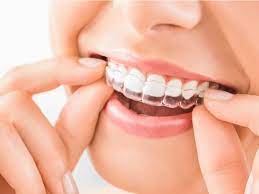Wearing a dental retainer is a crucial part of your orthodontic treatment journey. After the removal of braces or clear aligners, your retainer helps maintain your teeth in their new positions. However, for many people, adjusting to wearing a retainer can be uncomfortable, especially in the beginning. This article provides helpful tips to make wearing your Dental Retainers more comfortable and easier to adjust to.
Understanding the Initial Discomfort:
-
Temporary Adjustment – When you first begin wearing your retainer, it’s normal to feel some discomfort. Your teeth may feel slightly tight or sore, but this usually goes away as your teeth adapt to the new position.
-
Speech Changes – Many people experience slight speech impediments when they first wear a retainer. This may include lisping or difficulty pronouncing certain sounds. Rest assured, this is temporary and typically resolves after a few days of wear.
-
Getting Used to the Feel – The sensation of having a foreign object in your mouth may take some time to get used to. It may feel bulky at first, but as you continue to wear it, your mouth will adapt.
Start Wearing Your Retainer Gradually:
-
Ease Into Full-Time Wear – If your orthodontist has recommended full-time wear, start by wearing your retainer for a few hours each day and gradually increase the duration. This will help your mouth adjust without overwhelming you.
-
Nighttime Wear – If your retainer needs to be worn at night, make sure to establish a routine so that you can comfortably wear it while sleeping. Some people find it easier to get used to their retainer while they are asleep, as they are not conscious of it.
-
Consistency is Key – Consistently wearing your retainer, as directed by your orthodontist, is essential for success. The more you wear it, the quicker you will get used to the feeling and discomfort will decrease.
Practice Speaking and Eating with Your Retainer:
-
Speech Practice – To overcome any temporary speech difficulties, practice speaking out loud. Read books or articles aloud, sing along to music, or practice tongue twisters to help your mouth adjust to speaking with the retainer in place.
-
Eat Soft Foods – Initially, try eating soft foods that are easier to chew, such as yogurt, mashed potatoes, and smoothies. Hard or sticky foods can cause discomfort and may also damage your retainer.
-
Chewing Slowly – When you eat, take your time and chew slowly to avoid discomfort. After you’re more accustomed to the retainer, you can gradually return to a normal diet.
Keep Your Retainer Clean and Comfortable:
-
Daily Cleaning Routine – Clean your retainer regularly to prevent the buildup of bacteria or plaque. Brush it gently with a soft toothbrush and use lukewarm water. For deeper cleaning, you can soak it in a retainer cleaning solution.
-
Avoid Hot Water – Never use hot water to clean your retainer, as this can distort its shape. Stick to lukewarm or cool water for cleaning.
-
Proper Storage – Always store your retainer in a protective case when you’re not wearing it. This will prevent it from getting lost or damaged. Never leave it exposed to heat or direct sunlight, as this can warp the material.
Manage Any Pain or Discomfort:
-
Pain Relief Options – If your retainer causes discomfort or soreness, you can take over-the-counter pain relievers like ibuprofen or acetaminophen to ease the pain.
-
Orthodontic Wax – If your retainer causes irritation to the inside of your mouth, consider using orthodontic wax. Apply the wax to any parts of the retainer that are causing discomfort, as this can provide a cushion to alleviate the irritation.
-
Contact Your Orthodontist – If the discomfort persists or becomes unbearable, reach out to your orthodontist. They can adjust the fit of your retainer or provide alternative options for more comfort.
Keep Up with Regular Checkups:
-
Monitor Fit and Comfort – It’s important to attend follow-up appointments with your orthodontist to ensure your Best Retainers is fitting correctly. Your orthodontist can make any necessary adjustments to improve comfort or address any issues.
-
Retainer Check-ups – Regular check-ups allow your orthodontist to ensure that your retainer is still doing its job of maintaining your teeth alignment. They may suggest replacing your retainer if it shows signs of wear or no longer fits properly.
-
Address Concerns Early – If you experience any discomfort or issues with your retainer, it’s best to address them early. This can prevent bigger problems later on and ensure that your teeth stay in the correct position.
In conclusion, getting comfortable with your dental retainer takes time and patience, but it is essential for maintaining the results of your orthodontic treatment. By following these tips, practicing consistently, and addressing any issues promptly, you can make the process much easier. With time, your retainer will become a natural part of your daily routine, helping you preserve your straightened teeth for years to come.

